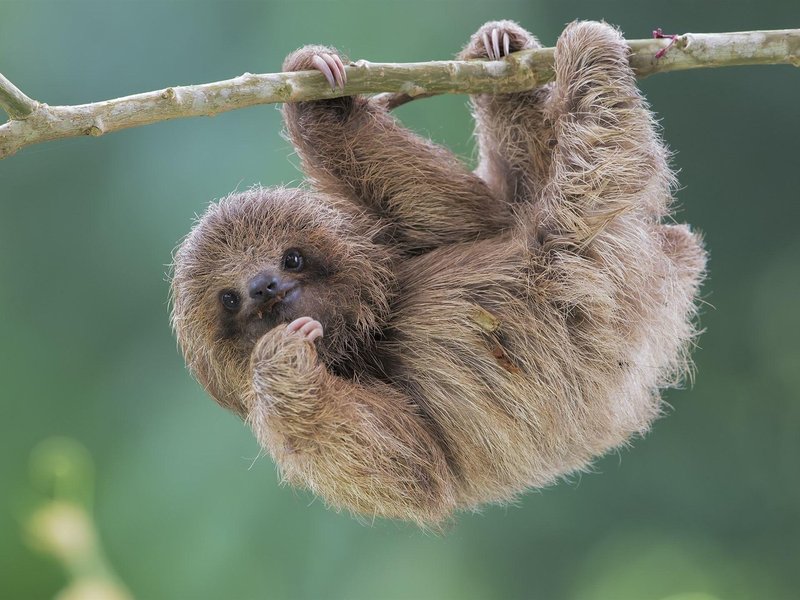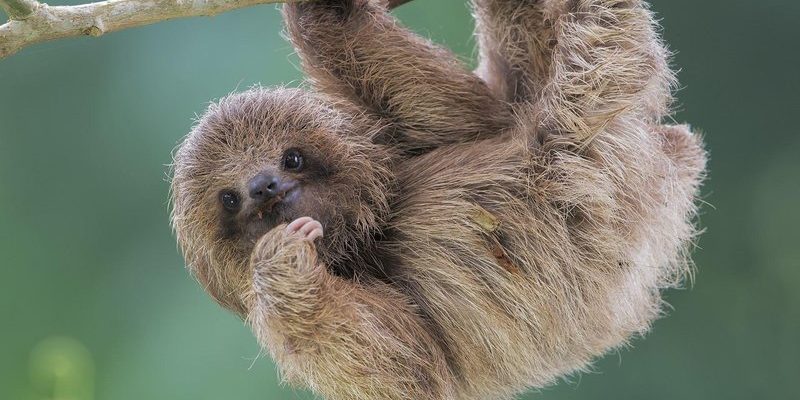
Imagine sloths as the gentle, laid-back parents of the animal kingdom. They teach their young ones valuable lessons through everyday life, much like parents do for us. Their method of parenting may not seem flashy at first glance, but it’s effective and filled with love and care. In this article, we’ll dive into the fascinating world of sloth parenting and explore how they nurture their little ones in the wild.
Sloth Parenting: An Overview
To understand how sloths raise their young, it helps to know a bit about their lifestyle. Sloths are arboreal creatures, meaning they spend most of their lives in trees. They are native to Central and South America, where they thrive in tropical forests. Because they are not the fastest animals, sloths have developed unique parenting strategies to ensure their babies survive and grow in this environment.
Young sloths, called infants, cling to their mothers right from birth. This close contact provides warmth, safety, and security. Baby sloths are born with their eyes closed and depend heavily on their mothers for everything—from food to guidance. During the early months, sloth mothers are quite protective and keep their infants close, teaching them the ropes of their slow-paced lifestyle.
Sloths often give birth to just one baby at a time. This allows them to focus their energy on nurturing their young, which is crucial for the infant’s survival. The connection between a mother sloth and her baby is strong and vital for their development.
How Mothers Care for Their Infants
You might be wondering, “What does sloth parenting look like on a daily basis?” Well, mothers take on the lion’s share of the parenting responsibilities. After giving birth, a mother sloth will carry her baby for several months, often cradling it on her belly or back. This ensures that the infant stays safe from predators and has easy access to its mother for nursing.
Mothers also communicate with their babies through gentle sounds. These soft calls help to bond the mother with her young and teach the baby important social cues. When you think about it, it’s similar to how we use soothing tones and comforting words with children. The bond formed during this time is crucial as it lays the groundwork for the infant’s future behavior as an adult sloth.
As the baby grows stronger, it starts to mimic its mother’s movements and habits. Over time, it learns how to eat leaves and navigate the trees. This learning phase can be a bit of a slow process but trust me; it’s all part of the sloth charm.
The Role of Diet in Sloth Parenting
When it comes to raising young sloths, diet plays a crucial role. Sloths are herbivores, primarily feeding on leaves, fruits, and flowers. Surprisingly, they have a slow metabolism and can take days to digest their food. This means that a mother sloth must choose the right foliage not only for her health but also for her baby’s growth.
In the wild, a mother will guide her infant to the best dining spots in their treetop home. She carefully selects leaves that are nutritious and safe for her baby. This process is almost like a gourmet tour of the treetops, where the mother introduces her little one to various types of foliage. As the baby sloth matures, it starts to experiment with different leaves and textures, building confidence in finding its food.
Here’s the thing: sloth mothers are also careful about their own diets since what they eat directly affects their babies. If a mother sloth eats well, she can provide the necessary nutrients through her milk. This gives her baby a strong start in life, which is essential for its long-term health and success in the wild.
Teaching Survival Skills
As the baby sloth grows, one of the most important jobs for the mother is to teach survival skills. Remember, sloths aren’t exactly speed demons, so they have to be savvy in avoiding predators like jaguars and eagles.
One essential skill is climbing. From a young age, the mother encourages her baby to practice climbing by engaging in slow-motion play. You can picture it: a mother and her baby moving cautiously through the branches, encouraging one another. It’s not a race; it’s a careful dance.
Another survival skill involves identifying safe versus dangerous leaves. Since not all leaves are suitable for sloths, the mother helps her infant learn through trial and error. If the baby tries a leaf that makes it feel unwell, mom is right there to guide it away from danger next time—like how we learn not to touch a hot stove after getting burned.
Independence and Transition
As sloth babies grow older, they gradually gain independence. About six months to a year after birth, a baby sloth will start spending more time on its own. This is a vital stage, as it prepares them for life in the wild without their mother’s constant supervision.
During this transition, a mother sloth will often let her baby explore nearby branches while keeping a watchful eye. It’s a bit like letting your child ride their bike down the street for the first time—you want to give them freedom but still be close to ensure their safety.
Once the young sloth becomes fully independent, it may stay in the same area as its mother for a while, but eventually, it will wander off to establish its own territory. This independence ensures that new generations of sloths can thrive without overcrowding the habitat.
The Lifelong Bond
Even after they separate, the bond between a mother sloth and her baby can remain strong throughout their lives. Sloths recognize their offspring by their unique scents and sounds, making the connection even more special.
Honestly, it’s heartwarming to think about the emotional adaptation of sloths. Though their lifestyle might seem simple, the relationships they form are intricate and vital for their survival. Young sloths often return to their mothers for guidance and support in the months after leaving, showing that family ties matter in the animal kingdom too.
In essence, sloth parenting isn’t just about raising an infant; it’s about building a safe, loving environment where young sloths can learn, grow, and eventually thrive on their own.
In summary, sloths may take life slow, but their approach to raising their young is anything but lazy. From nurturing infants with love and care to teaching vital survival skills, sloth mothers are dedicated parents. They create a lasting connection with their little ones, ensuring that the next generation of sloths is equipped to navigate the challenges of life in the wild.
Next time you think of sloths, remember that beneath their laid-back exterior lies a world of caring and skillful parenting. Whether you’re enchanted by their gentle demeanor or impressed by their survival strategies, there’s no denying that sloths have mastered the art of raising their young in the wild, one slow step at a time.

